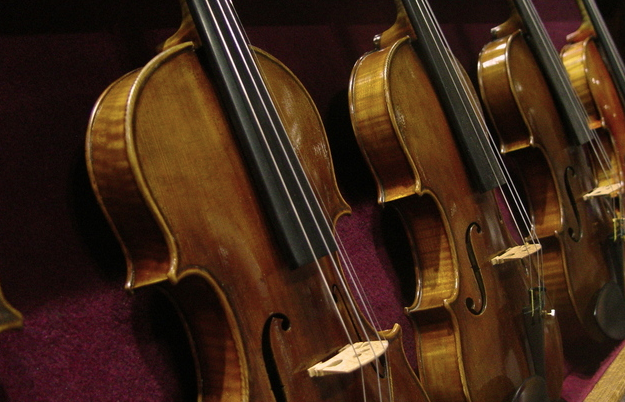
“With great elegance, he contrasts the dullness of mindless routine with the exhilaration of mindful ritual”
-Maria Popova, about the cellist, Pablo Casals
It would be an understatement for me to say that I enjoy my daily saxophone practice more than ever at any point in my life. I look forward to it each day with buoyant anticipation and great delight.
Though I play “better” on some days than others, I never have a “bad” day practicing. (Really!)
This wasn’t always the case for me.
To be sure, I’ve always (even as a beginner) been disciplined about daily practice. I would even say I was a bit “obsessed” at times. Diligent, committed, strategic.
But for most of my musical life, there was not much enjoyment in the process of practicing. The exceptions were when I was having a particularly “good” day playing. These days were few and far between.
It was mostly a “no pain, no gain” attitude that I brought into the practice room. You know, the “If it sounds good, you’re probably not practicing” kind of thing. I practiced for one reason only: to improve. (To be clear, wanting to improve is still important to me!)
But all this began to change as I discovered the Alexander Technique as an effective way to help me deal with a debilitating neurological condition known as focal dystonia.
An essential principle of the Alexander Technique is in giving the “quality of process” top priority in any activity you’re engaged in. In short, you learn to not just focus on your desired goal (the specific thing you’re trying to achieve musically/technically, as you practice), but to always pursue that goal in a way that is in best accordance to your human design and your intentions.
Ease, economy of effort, balance, poise…these qualities of psychophysical experience become as important as the desired musical/technical result itself.
F.M. Alexander described this commitment to the quality of process in activity as the “means whereby”. Or as I say, the quality of “how I use myself doing whatever it is I do”.
So by design, paying attention to the means whereby means being present…curious, receptive, reflective, purposeful, edifying, self-compassionate, playful…It also means being willing to take your time in doing what you do. Not getting ahead of yourself, so to speak.
When you bring these qualities into your daily musical practice, you just naturally practice “better”. You become more efficient in your efforts, more effectively strategic, more open and honest in what you actually “hear” as you practice, what you’re actually capable of. You become more willing to explore being “wrong” to find new possiblities.
You also become so much clearer about what you want, about who you are as an artist.
But you can also learn that being this mindful in the practice room has a remarkable effect on your conscious experience as a whole.
You can discover that paying attention to the quality of the “how” of your practice routine provides a meditative experience. An experience of mindfulness in movement, merged with intention.
In this experience your brain activity actually changes, as in any type of meditation practice. And you might find that you enjoy these new changes in your consciousness, that you find this kind of “presence” in your practice routine as being deeply satisfactory.
And ultimately, you can bring this kind of mindfulness into your daily life, learning to be present and engaged in even the most seemingly mundane activities.
So instead of just practicing as a “means to an end”, you might find that the process of practicing becomes an end unto itself.
How do you go about doing this?
Start with looking for ease in yourself: an easy, fluent and stable connection to the ground; free and expansive neck and shoulders; mobile hips, knees and ankles; full, dynamic, natural breathing, etc.
Then get clear about what it is you want in the moment, what specifically you’re aiming for (musically/technically) as you engage with your instrument.
Use your time mindfully, as well. Choose to stop, to pause, to redirect your attention between “takes” while practicing a particular exercise.
Cultivate curiosity. Ask yourself lots of questions:
“What would I like to have happen?” (What do you want musically/technically?)
“How am I ‘using’ myself right now” (Are you free, mobile and expansive?)
“What am I actually hearing?” (Are you listening openly and actively?)
“What shall I do next?” (Should you repeat what you’ve just played, or move on? Why, or why not?)
Finally, practice being kind to yourself. Take your time. Speak to yourself gently. Smile at your “mistakes” and learn from each one. Realize that the act of practicing your instrument is actually a way of deepening your discovery and understanding of yourself.
Be grateful for this remarkable experience of creating and sensing resonance. And for being able to once more, each day, go inside yourself to find beauty and send it out into the world (even if you’re the only one there to hear it!)
I’ve been practicing through these principles for over 18 years now, and I can tell you that the intrinsic satisfaction of daily practice is a precious, “stand-alone” gift. And as a bonus, I continue to improve and grow as a musician, and as a human being, in ways I never before imagined.
I wish the same for you, too.
Pingback: Favorite blog posts, January 2020 | Bret Pimentel, woodwinds